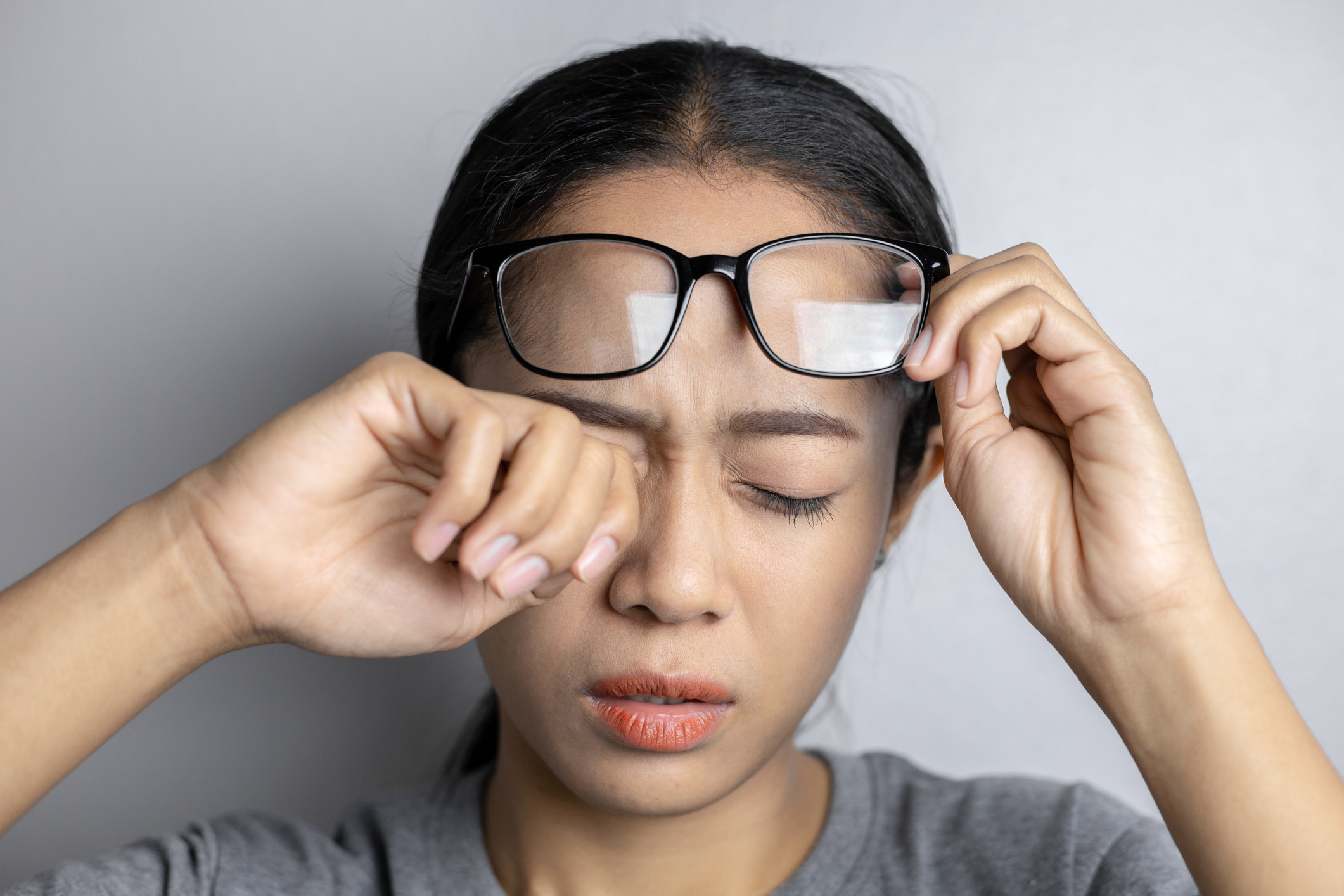Diseases
Computer Vision Syndrome

Computer Vision Syndrome
Definition
Computer Vision Syndrome is eye fatigue caused by prolonged use of a computer screen.
Organ
The entire eye is affected by eye fatigue.
Symptoms
- Eye fatigue
- Headaches
- Blurred vision
- Dry eyes
- Irritated eyes
- Difficulty focusing on a particular object
- Shoulder and neck pain
Frequency
People who work at screens all day are highly susceptible to developing this syndrome.
Causes
Staring at a screen all day long requires a great deal of attention, which means that the blinking of the eyes is significantly reduced, so the eye is dehydrated and the conjunctiva and cornea suffer.
What's more, the eye is constantly accommodating, which explains why it gets tired and vision can become blurred.
Evolution
This discomfort disappears with a few preventive measures.
Prevention
Here are a few tips to help you reduce the risk of developing computer vision syndrome:
Place your screen about an arm's length away from your eyes and 20 degrees below eye level.
Choose colours and contrasts on your computer screen that don't hurt your eyes and that match the lighting in the room you're in.
Reduce glare on your screen by dimming the lights in the room if possible, and consider using anti-glare protection on your screen. You could also position your screen so that it is perpendicular to windows and other sources of bright light. If you have difficulty identifying the source of the reflection, close your screen so that it is dark and adjust it by tilting it until the reflections disappear.
Make sure your screen is free of fingerprints and dust, as they can reduce the screen's visual clarity.
If you work on a computer and on paper at the same time, consider buying a stand in the form of a vertical shelf that sits close to the screen so that the two are at the same distance.
Follow the 20-20-20 rule. Every 20 minutes, take a 20-second break and look at something 20 feet away. This will give your eyes a well-deserved break and help reduce symptoms.
Remember to blink! Did you know that we blink an average of 12 times a minute, but only 5 times a minute in front of a computer? This makes your eyes drier. You can relieve the discomfort with eye drops or simply by thinking about blinking. Consult your optometrist to choose the best drops for your eyes.
Ask for an anti-reflective coating to be added to the lenses of your glasses. This is applied at the time of manufacture and protects your eyes from bright or flickering light sources, such as fluorescent lights.
Ask for lenses designed to reduce the effort required to concentrate while working at a computer. Several lens manufacturers now offer lenses that reduce the strain on the eyes. These lenses are optimised for the distance from the computer screen and generally maximise the field of vision, which is important for people who work with larger screens or multiple screens.
Source: OPTO
Diagnosis
A full visual examination is carried out.
Information about the amount of time spent in front of screens is important information to give your practitioner.
Treatments
In the case of dry eyes, artificial tears or a lubricant ointment may be prescribed.
If vision problems such as hypermetropia or astigmatism are detected, glasses may be recommended.
